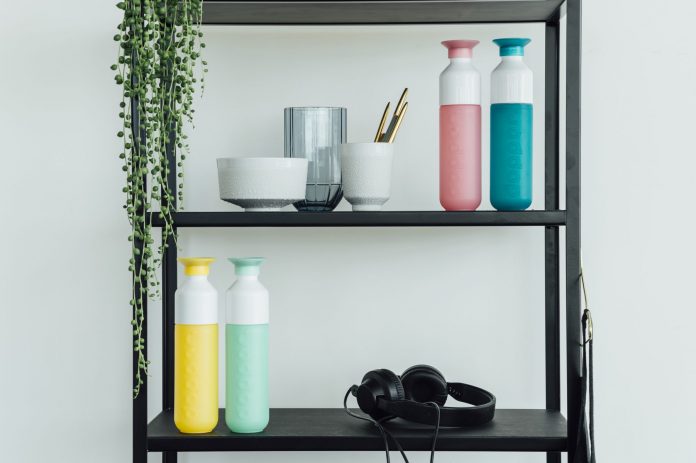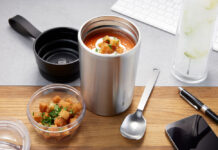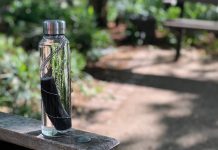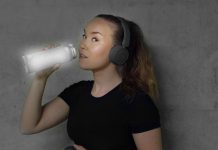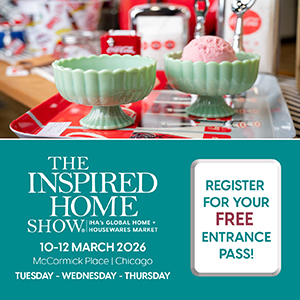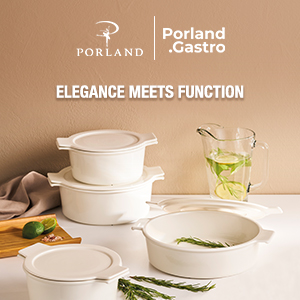A combination of healthy living and environmental awareness is leading to increased demand for on-the-go water bottles, with high design, eco materials and personalisation driving the category
In an era where people are more aware than ever that they need to protect and preserve the planet for future generations, many homewares/lifestyle companies are striving to eliminate the use of single-use water bottles because of the massive amount of plastic waste that they create.
Enter the hydration movement, where consumers, concerned both with their planet and their own health, are investing in durable and sustainable drinks’ bottles, leading to growth in the hydration category.
We caught up with two retailers to talk about the hydration solutions they are offering – Terri Winter, founder and director of top3 by design in Australia, and Lisa Cherry, a buyer for UK retailer, John Lewis.
“Water bottles are one of our largest sales categories,†says Terri, whose store only stocks original designer products deemed the best in their categories.
“We look for water bottles of high quality that are easily cleaned and cater to people’s different requirements. Some are super-light, some double-walled and some flat for easy storage in a briefcase. All of them ensure that the end user can easily keep their bottle close by.â€
Terri explains that several years ago, Australians were concerned with having filters in their water bottles, but now her customers want to keep things simple, as they trust the country’s water supply.
“The War on Waste series on ABC television had a large impact on both single-use water bottles and coffee cups,†she says. “People now want to do their bit – and save some money in the process. And it’s healthier to drink from a personal water bottle, because people drink more if they can just refill instead of buying bottles.â€
In the UK, Lisa from John Lewis agrees that the hydration movement continues to gain momentum, with their consumers moving away from traditional water bottles and looking for added benefits.
“Consumers are also becoming much more aware of the environmental impact of plastic, as well as the economic drive to save money. We’re seeing a growing trend for alternatives to plastic, in particular glass and stainless steel,†she says.
“Customers love the versatility of stainless steel as you can keep your drinks hot or cold. Premium plastic water bottles are on the rise, and features such as Joseph Joseph’s dot hydration tracker are enticing customers to trade up.
However, fashion is now a big part of the hydration movement, too, with companies such as Dopper, S’well and Neolid ensuring consumers can choose water bottles that look great as well as do the job.
“The look and feel of the bottle is always a drive to purchase, and new brands have re-invigorated this, making the water bottle a fashion statement,†says Lisa. “Social media and TV programmes such as Love Island, have played a great part in this trend with people instagramming their water bottle and adding personalisation.â€
Terri adds: “If people are going to carry a water bottle around, they want it to be a symbol of who they are. To be part of someone’s daily routine, a bottle needs to fit into a person’s life. So, although the fashion side might seem frivolous at first glance, it is a legitimate step towards drinking more water for health benefits.â€
Terri also points out that S’well recently released a limited-edition, Swarovski crystal-encrusted water bottle. “This is a symbol that the water bottle is more than just a water bottle to many people,†she says. “They’re a part of your life and a sign to others that you take care of yourself.â€
S’well is continually defending its brand against illegal copycat companies producing fake bottles, yet the brand continues to grow year upon year as more and more people want the real thing, experiencing the benefits of quality design.
“Cheap copies will cost you more than what you saved,†Terri warns. “There can be harmful chemicals in cheap plastics used in copycat products—it’s always important to look for BPA-free products.â€
With healthy living being another movement happening simultaneously around the world, the hydration movement is being further fueled.
“Products around healthy eating and healthy living are resonating more and more with our consumers, and this a primary component in a purchasing decision,†Lisa says. “Consumers are interested in using more environmentally sustainable substrates as well as substrates with perceived health benefits or functionality.â€
The hydration movement will undoubtedly continue to flourish. “Our existing brands will continue to deliver new innovations. We had a wellness campaign in 2018, where hydration featured heavily, showing customers products that can help them to live a healthy lifestyle,†concludes Lisa.


